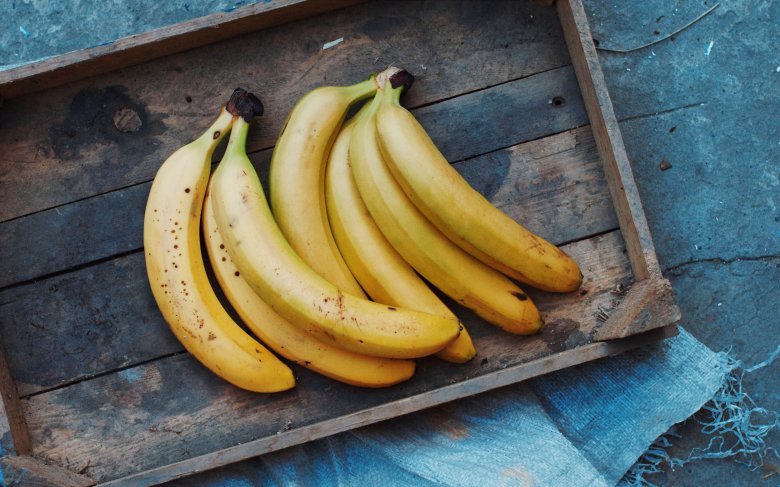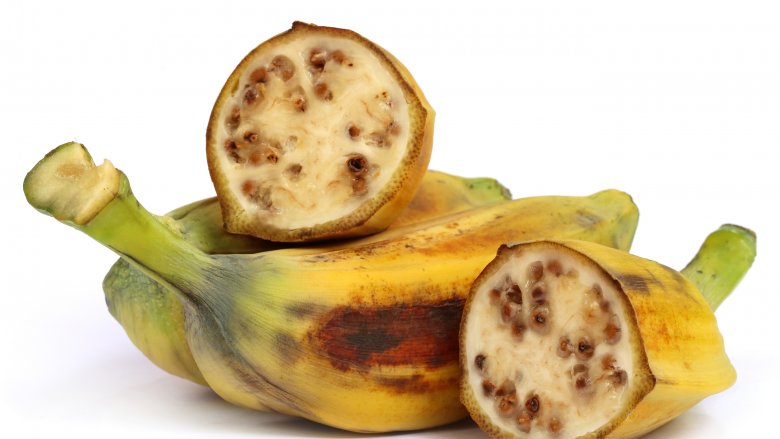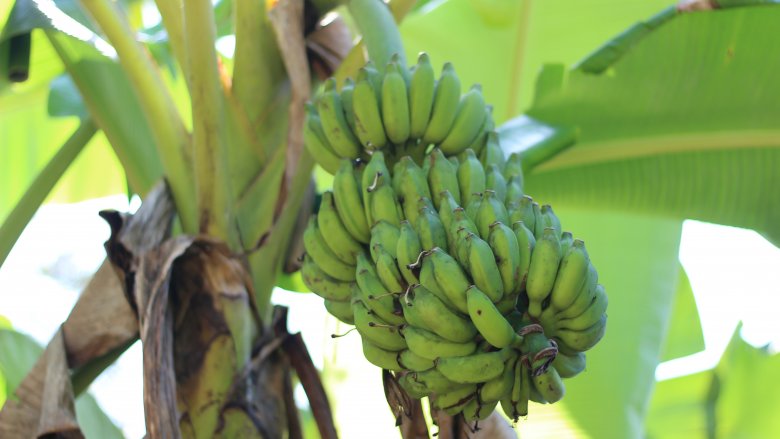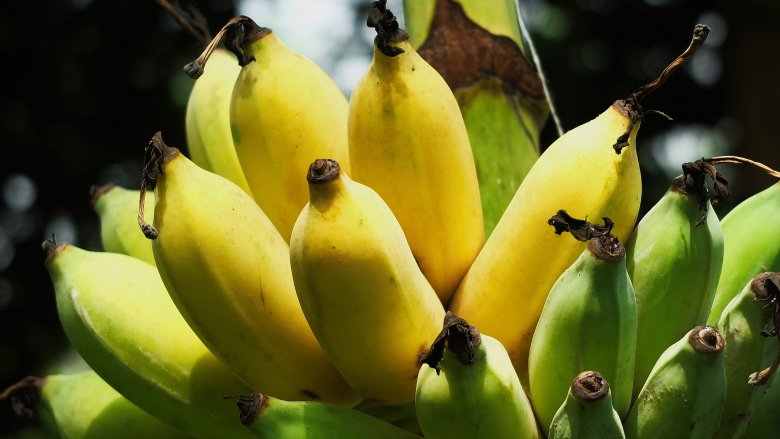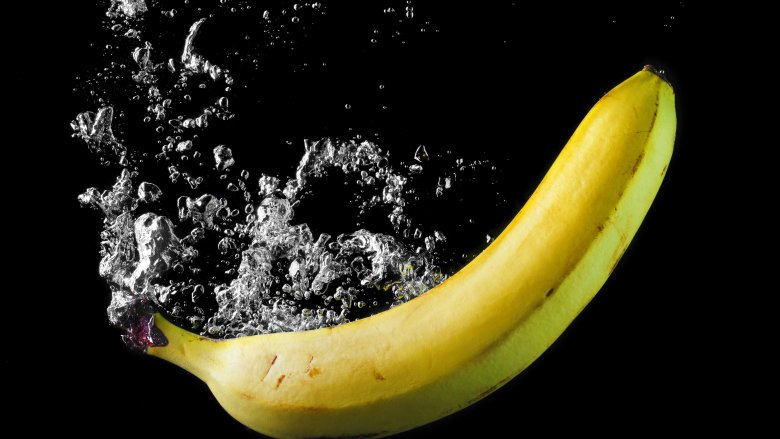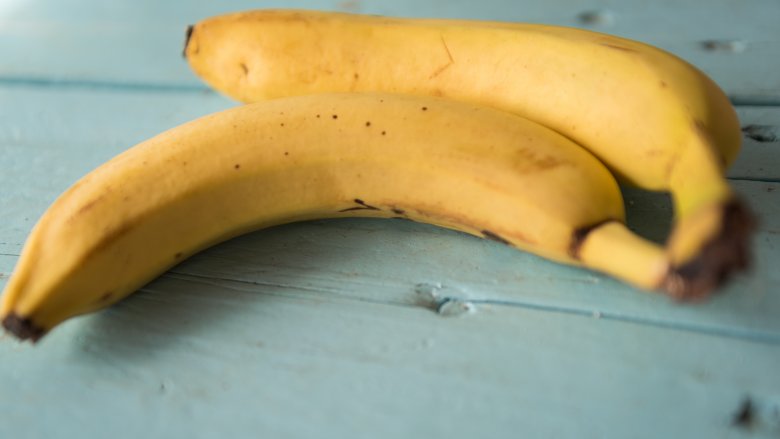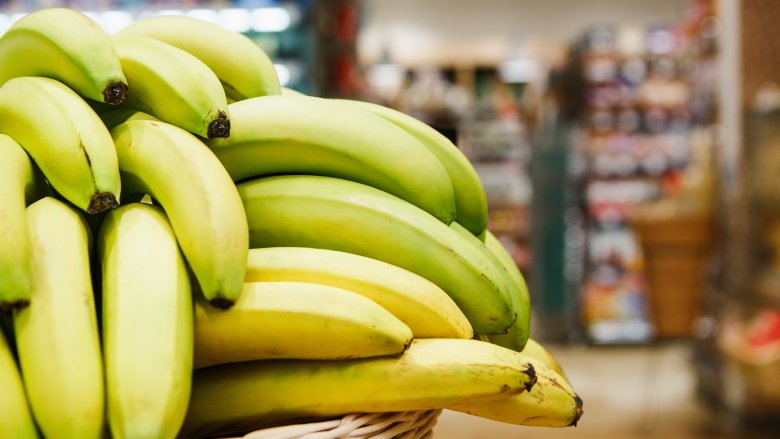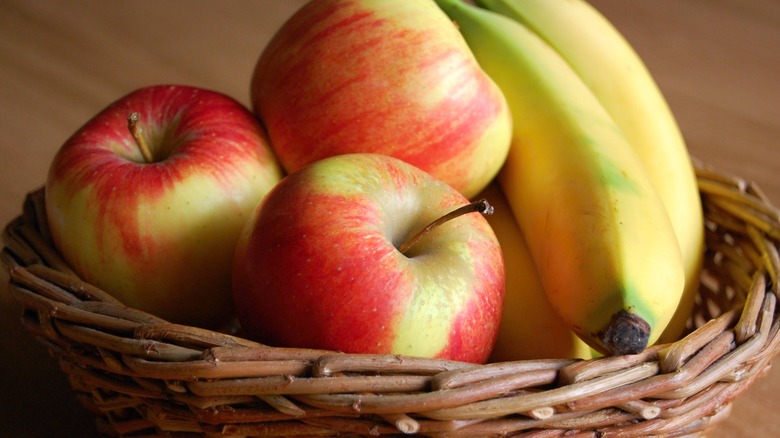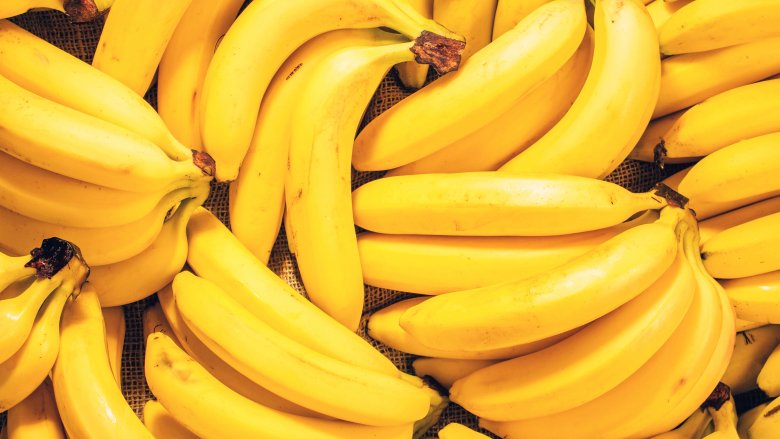How Bananas Really Get To Your Table
Bananas are an inexpensive, nearly ubiquitous fruit. They grace fruit bowls, hotel continental breakfast buffets, school lunches, even vending machines. They're affordable, portable, nutritious, easy to eat, and filling, making them good choices for all of those purposes and more. They tend to, however, also have a love it or hate it kind of reputation. Some people love them — baking with them or eating them plain, the perfectly-portioned snack. Others absolutely abhor them and won't touch them at all. They're not native to many of the locales that enjoy them, however, so how do they really get to your table — or local grocery store — in the first place?
As it turns out, bananas go on quite a journey to get to you — and the whole process is a lot less natural than you'd probably like to believe. Here are all the details from each stop along the way.
Wild bananas are weird
Wild bananas — the bananas that used to be the most plentiful — are basically unrecognizable from what you purchase from your local supermarket. These bananas contain obvious seeds and only a very small amount of fruit that's actually edible, meaning they're not really a feasible source of nutrition for humans, according to Conservation Magazine. The most popular varieties of bananas from your grocery store aisles and farm stands are usually not wild, but rather were carefully cultivated by replanting cuttings. That's right, while wild bananas reproduce from seeds, those commonly found in the produce section cannot.
Bananas are sterile
Bananas grow in tropical climates, meaning they do not grow in the vast majority of the United States. They often grow to be about 10 to 20 feet tall — but they're still not considered trees.
The banana plant takes the turn towards producing fruit around 9 months of age, when the resulting flower is removed and the grower adds a plastic bag to the stem to encourage the plant to grow. The plant, like any other, needs regular care until the fruit is ready to harvest, which takes about 11 weeks.
Harvesting is harder than you think
In order to effectively harvest bananas, you actually have to cut down the plant the fruit grew from. Using an extremely sharp instrument (like a machete), you make a cut, pull the bunch towards the ground, and make additional controlled cuts to remove the bunch from the plant. Those bananas then get moved to be prepared for distribution.
Getting a move on
After the bananas are harvested, they're often washed in water and stored in cardboard boxes which are then stored (and also transported) in refrigerated, temperature-controlled ships or trucks, according to The Guardian. Both the washing and refrigeration are imperative so the bananas don't over-ripen (or ripen at all, depending on the supplier) while being transported from the fields and distribution centers all the way to the grocery stores or other purchasing centers.
Forced ripening
According to The Guardian, after the unripe bananas have been transported to places closer to where they will eventually be sold, they must be forcibly ripened, using ethylene gas. The rooms where the bananas are being ripened are sealed, to make the ripening process as successful as possible. The gas is then removed from the rooms, the rooms are heated, and the bananas are left to ripen. After that, they're off to the grocery stores.
At the store
When purchasing bananas, it's extra important to pay close attention to how ripe they are, while also considering when you're planning to eat them or what you're planning to do with them. If you're going to bake banana bread, for example, they'll have to be extremely ripe before you make your bread. If you're going to eat them as a snack on their own, chances are you don't want them to be quite as ripe. Timing is everything with this fruit.
Storing them correctly
Once you get them home with your bananas, you need to make sure to store them correctly. According to The Kitchn, your bunch of bananas will last longer if stored together as a bunch, rather than separated.
Most bananas travel long distances to make it to your table
If you live in the United States, chances are, it takes a lot of time, energy, and effort for bananas to make it to your table. Honor all of that effort and hard work by making sure they don't go to waste — enjoy!
